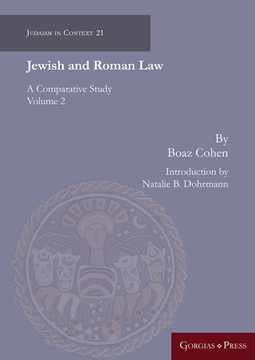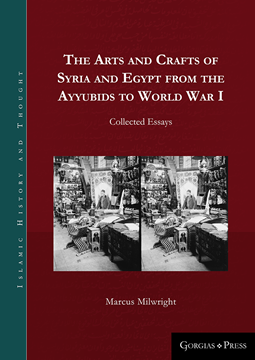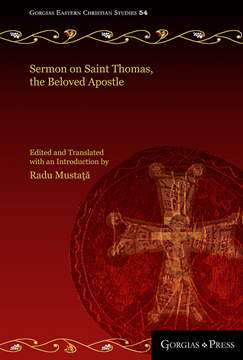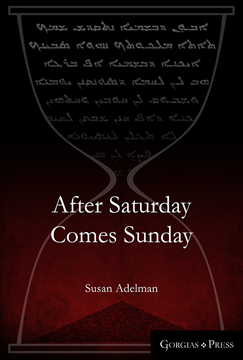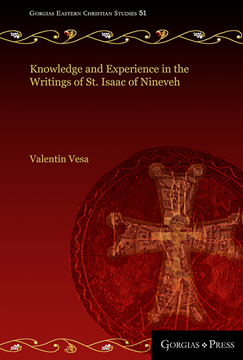Jewish and Roman Law (volume 2)
A Comparative Study
By Boaz Cohen; Introduction by Natalie B. Dohrmann
Series: Judaism in Context 21
ISBN: 978-1-4632-0758-8
This work is volume 2 of Boaz Cohen’s collected articles, with a new introduction by rabbinics scholar Natalie B. Dohrmann.
$72.60 (USD)
The Arts and Crafts of Syria and Egypt from the Ayyubids to World War I
Collected Essays
Series: Islamic History and Thought 7
ISBN: 978-1-4632-3900-8
This book focuses on the production, sale, and consumption of portable arts in regions covered today by the modern polities of Egypt, Syria, Jordan, Lebanon, and the Palestine Authority. The reprinted chapters in this volume have been revised and updated. They offer interdisciplinary approaches to the material culture of the region from the twelfth to the early twentieth centuries, combining evidence from primary written sources, archaeology, and objects in museums and private collections. Topics include the production and distribution of pottery, importation of glazed wares into the Middle East, shadow puppetry, economic activity associated with the Syrian hajj, the manufacturing practices of the crafts operating in Damascus during the last decades of Ottoman rule, and the decoration of artillery shell cases during and after World War I. Also included are an introduction containing a critical evaluation of the main sources of information, a cumulative bibliography, and a previously unpublished study of leatherworking in the late Ottoman period.
$162.00 (USD)
Hugoye - Journal of Syriac Studies (volume 19)
2016
General Editor George Anton Kiraz
Series: Hugoye: Journal of Syriac Studies 19
ISBN: 978-1-4632-3901-5
Widely regarded as a premier journal dedicated to the study of Syriac, Hugoye: Journal of Syriac Studies was established in 1998 as a venue devoted exclusively to the discipline. An organ of Beth Mardutho, the Syriac Institute, the journal appears semi-annually and will be printed in annual editions. A peer-reviewed journal, Hugoye is a respected academic source for up-to-date information about the state of Syriac studies and for discovering what is going on in the field. Contributors include some of the most respected names in the world of Syriac today.
$75.00 (USD)
Sermon on Saint Thomas, the Beloved Apostle
A Syriac Catholic Panegyric from Seventeenth Century Malabar
Translation and Introduction by Radu Mustaţă
Series: Gorgias Eastern Christian Studies 54
ISBN: 978-1-4632-3902-2
A study of a homily in praise of Saint Thomas, written in Syriac by a Catholic missionary. The homily, which is preserved in two manuscripts, is an important witness to the interaction between the Indian Syrian Christians and the Western Catholic missionaries.
$78.65 (USD)
After Saturday Comes Sunday
ISBN: 978-1-4632-3904-6
Starting with the biographical story of a 92 year old Chaldean woman from northern Iraq and a biography of a Kurdish Jewish woman now living in Israel, Adelman writes about the history of Christians and Jews in the Middle East. Their languages, dialects of the 3000 year old Aramaic language, are under threat, and their homelands continuously threatened by war.
$35.00 (USD)
Knowledge and Experience in the Writings of St. Isaac of Nineveh
Series: Gorgias Eastern Christian Studies 51
ISBN: 978-1-4632-3905-3
One of the most popular monastic authors with a nearly universal spread over time is Isaac of Nineveh, a mystic of the late 7th century, who belonged to the East Syriac Church. This book is dedicated to the doctrine of knowledge, as described in Isaac of Nineveh’s discourses, in its double dimension, worldly/philosophical and theological (the former considered to be more discursive/intellectual and the latter intuitive/ experiential) and the rapport established between these two, prolonged in the concept of vision, as the highest form of spiritual experience.
$114.95 (USD)
